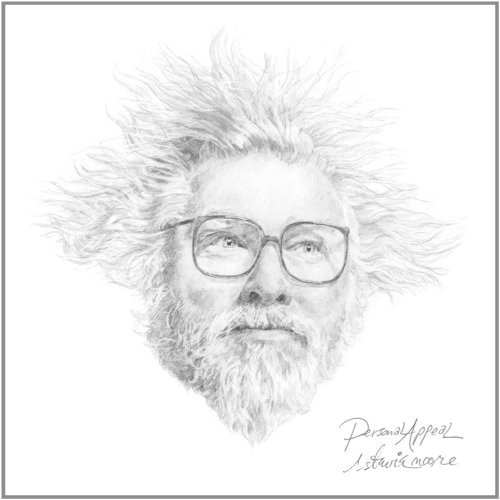
R. Stevie Moore
Personal Appeal
Release Date: Aug 20, 2013
Genre(s): Pop/Rock
Record label: Forced Exposure
Music Critic Score
How the Music Critic Score works
Album Review: Personal Appeal by R. Stevie Moore
Very Good, Based on 7 Critics
Based on rating 4/5
There's a problem with R Stevie Moore's music and he knows it. "The songs are too weird," he chants at the end of Why Can't I Write a Hit?, over scattershot blips and burps, disrupting what began as a rainbow-bright tune that might sound perfectly happy on the radio sandwiched between Super Furry Animals and the Flaming Lips. Moore does this a lot: grafting abstract noise on to golden melodies, juxtaposing melancholy emotion with self-deprecating humour, a bedroom Brian Wilson without the commercial imperative of the Beach Boys to curb his idiosyncracies.
Based on rating 4/5
Ever since Ariel Pink cited him as an influence, Tennessee’s R Stevie Moore has toured the world and become something of an icon for hipsters. But Moore doesn’t care about fame. Since 1968, he has released over 400 albums, many of them on cassette or CD-R on his own label. This compilation harvests a selection of his 1973–2001 output of country, garage and general weirdness.
Based on rating 7.5/10
R. Stevie Moore’s body of work is unmanageably vast. One estimate put his discography at over 400 releases, and that was a decade ago. But there’s a simple contradiction running through all of it. On one hand, Moore is the prototypical outsider, mostly home-recording his idiosyncratic tunes ….
Based on rating 7/10
New Jersey basement dweller and certified lo-fi recording pioneer R. Stevie Moore opens Personal Appeal, his 42nd (!!!) compilation album, with the tongue-in-cheek pop song "Why Can't I Write a Hit?" The half-serious slab of bedroom pop answers its own question with its manic structure, jagged recording, and Moore's flailing falsetto vocals, all pointing toward incredible and challenging outsider music but not even coming close to the disposable production and candy-coated appeal that land tunes in the Billboard charts. Moore culls the tracks for Personal Appeal from a mail-order-only cassette series spanning 1973-2001.
Based on rating 7/10
Unrelated thoughts and sounds can sometimes find an uneasy home together, even an alternate meaning, when juxtaposed with one another in close confines. On compilation album number 42 (there’s meaning there if you want it) culled from his 400+ deep back catalogue, 61-year-old R. Stevie Moore presents us with a 15-track collage of what are, in and of themselves, miniature musical collages, clashing like cymbals.
Based on rating 3.5
Some may think Robert Pollard the most prolific DIY artist. Not only, however, is R Stevie Moore actually the more productive artist making fuzzy sounds, but also a man who can lay claim to being the father, perhaps even the grandfather of the broadly-defined movement. Influencing everybody from Pollard to Ariel Pink, Moore’s output, which dates back to the late 1960s, is unrivaled.
Based on rating 3/5
It seems appropriate that, in an era when the music industry at large is on its knees, those who have always existed outside the business are finally getting the recognition their recordings undoubtedly warrant. R Stevie Moore is everywhere these days. Magazine covers, radio sessions, festival appearances and successful tours are something of a novelty for the Grandfather Of DIY.

